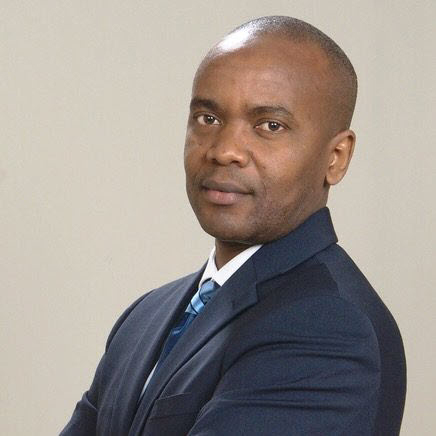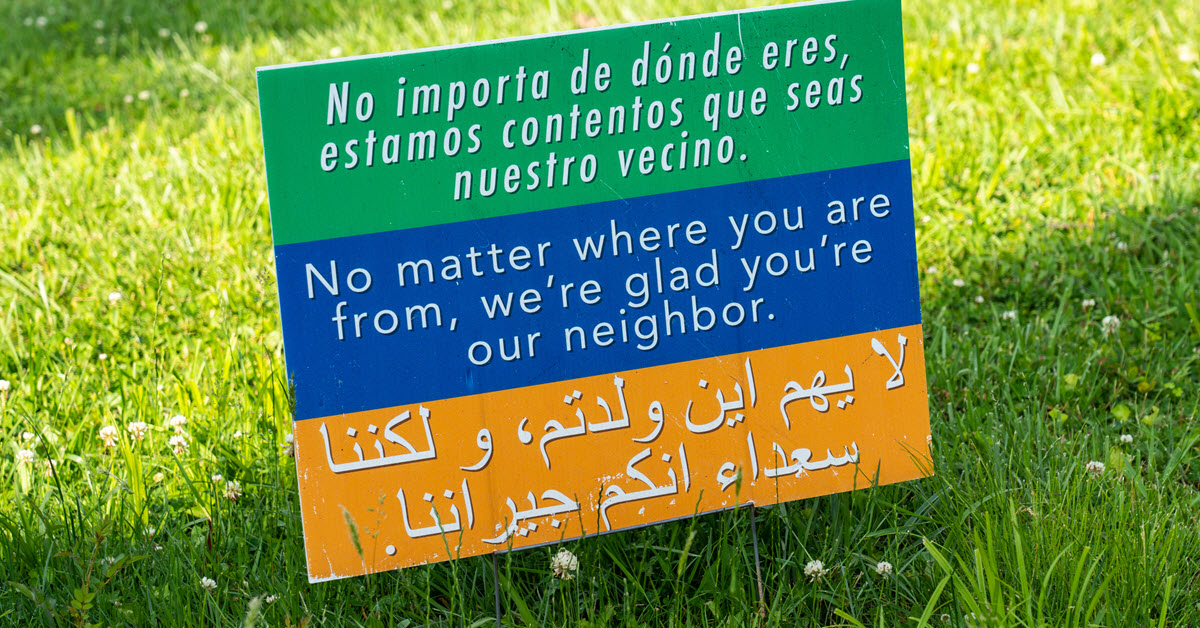Kheir Mugwaneza was “on the other side of service provision” before helping to launch the Immigrant and Refugee Health Program at Allegheny Health Network (AHN). Mugwaneza, an immigrant from Rwanda, came to the U.S. as a student. Later, he became a case manager for Catholic Charities, and then a refugee program director at Northern Area Multi-Service Center, helping vulnerable immigrant families to access and navigate the complex health care system in America.
Now lead project manager of the AHN Center for Inclusion Health Immigrant and Refugee Health Program, he connected with me to discuss the program — where’s it been and where it’s going — and how to help with the challenges faced by immigrant and refugee communities.

Kheir Mugwaneza, lead project manager for the Immigrant and Refugee Health Program, part of AHN’s Center for Inclusion Health
Emily Adamek: When it comes to health care, what are some challenges that immigrants and refugees face?
Kheir Mugwaneza: When people talk about health for refugees and immigrants, or patients with limited English proficiency, the first barrier that comes to mind is language. Interpretation and document translation are both very important.
But it’s also much more than that. We must take that next step to develop cultural understanding of where people are coming from, and what they’ve been through. Some people who come to this country will get into the health care system and navigate it fine, especially if it's similar to where they came from. But refugees and immigrants have varied backgrounds. And for the most vulnerable individuals, it’s even more important to understand their culture and traditions, especially surrounding issues of health and care. The most vulnerable of the families in our region have lived many years in refugee camps with limited resources — in some cases more than 20 years. During that time they experienced mental and physical trauma that affects their health.
Emily Adamek: What does the Immigrant and Refugee Health Program do to help?
Kheir Mugwaneza: One primary focus is education and training for providers across our network — both in-patient and out-patient — including making sure that patients with limited English proficiency have access to care. Whether it’s language interpretation, document translation, cultural understanding and adjustments, or awareness of resources, we help AHN clinicians to understand and serve these populations.
With a network as large as AHN, you can’t just put information in the system and assume that’s enough. We do have a one-page document with basic information about vendors for interpretation and translation, but if a provider has never had to use those services before, they may not know that information is there. Some providers may not know that there is a number to call and an email to contact with questions about interpretation, document translation, and cultural understanding. So we are constantly looking for ways to get the information out there. We had 30-minute Zoom sessions this year to talk about who to contact and what to do if they need an in-person interpreter. We’ll probably keep trying to reach people through Zoom sessions as a good way to let everyone share updates and ask questions.
Another example of our work was training the nutrition team and cafeteria managers at Jefferson Hospital about the Bhutanese culture and diet. We see many Bhutanese immigrants in the South Hills area outside Pittsburgh. If they need emergency care, Jefferson is where they go. As patients, they would get three meals a day. However — and this applies to many cultures — the food that’s typically served is very different from their normal diet. With COVID-19, it’s also been difficult for their loved ones to visit and bring them food. So, in collaboration with the Bhutanese Community Association and staff at Jefferson Hospital, we stepped in to discuss items that could be included on the menu, and easily — in this case, mostly just vegetables and curry. Without our program, it would be difficult to identify a need like that and then help make and coordinate the changes.
Emily Adamek: What can clinicians do with immigrant and refugee patients to make them feel seen, heard, safe, and cared for?
Kheir Mugwaneza: Communication is the key; we have to start with the basics. One thing I always recommend is having language identification posters available. That way, the patient can show you the language they use. We also want people to know that interpretation services are free, and that we have emergency tools to use in case we aren’t able to schedule interpreters at the time.
As a clinician, it’s important to know which languages are regularly used at your location. Spanish is number one everywhere in Allegheny County, and in Erie. But if you’re at Allegheny General Hospital, you can also expect Swahili, Chizigua, Lingala, Arabic. If you’re at Jefferson Hospital, expect Nepali. You’ll be amazed at how good it’ll make people feel even if you just learn to say hello in their language.
Language, culture, and tradition are complex. Nobody can be expected to know everything. But a program like ours can fill in a lot of gaps. For instance, we’re able to tell our people working in the North Side that the majority of Somali Bantus in their area do not speak Somali, they speak a different dialect, Chizigua or Mai-Mai. If you’re working with the Bhutanese people, we can tell you ahead of time that they prefer a Nepali speaker from a Bhutanese community, not from Nepal.
Emily Adamek: Have you gotten feedback from providers that has helped you shape the program?
Kheir Mugwaneza: Yes, in fact, right before COVID-19 started affecting us, a provider expressed that, instead of just me coming to talk about the Bhutanese, Congolese, Somali, Syrians, and Iraqis, it would be valuable to invite members of those communities to be there as well. That’s something we’re working on and plan to do as people are able to gather again. I know that leaders from our immigrant communities will be happy to come talk with our providers about the challenges they face, and share what we can do better to support them.

Mugwaneza says that one way we can all help immigrants and refugees is simply to get to know them and be kind.
Emily Adamek: How far have we come in terms of improving understanding and response to health care challenges in immigrant communities?
Kheir Mugwaneza: From the time I started working with refugees and immigrants in Pittsburgh until now, which is about 16 years, the change has been tremendous. If you had asked me back then, or even six or seven years ago, whether I thought there would be a program like ours, doing everything we do, I would have said no.
There is still room for progress, but we have come a long way, and I think service providers are doing a good job advocating for the patients. It helps to be centralized under the Center for Inclusion Health — to have one place to go if you need language interpretation or have questions about the immigrant community.
Emily Adamek: As far as “room for progress,” what longer term changes or goals is the program pursuing?
Kheir Mugwaneza: One recent change is creating quarterly evaluations to help us know and respond to issues as they come up.
Beyond what we currently do, I want to create training for cultural sensitivity and cultural humility and build it into AHN staff development and onboarding processes. I also want staff to learn more about the specific refugee and immigrant communities in our region, which isn’t a required training right now.
Another goal relates to workforce development — working with our diversity, equity and inclusion team to encourage hiring from our immigrant communities. We have immigrant and refugee staff in areas like cleaning and food services, but these populations often include people who come here highly educated. Someone may have been a doctor in Syria, for example, but may not have an easy path to being a doctor in the U.S. Maybe we could help them. As it is, there are a lot of unused skills, and that’s a loss for everyone.
Emily Adamek: Is there anything you wish the general public understood better about immigrants and refugees?
Kheir Mugwaneza: I could talk about this question until tomorrow, but the main thing is that we live in a very diverse community, and immigrants and refugees have much to offer in skills, and in their experiences and resilience. Most important, you’d be surprised at how much they will share if you just ask. With the most vulnerable, you may be stunned to hear what they have been through. They may have kids who have only known life in refugee camps before coming here.
If you have a new neighbor, ask where they’re from, what language they speak, how they came to be here. They will likely be more than happy to share their background and experiences. If you ask questions, you will realize that they are not so different — that they care about their family and came to the U.S. to give their family a better life. Ultimately, even if you speak different languages and have different traditions, people understand kindness.